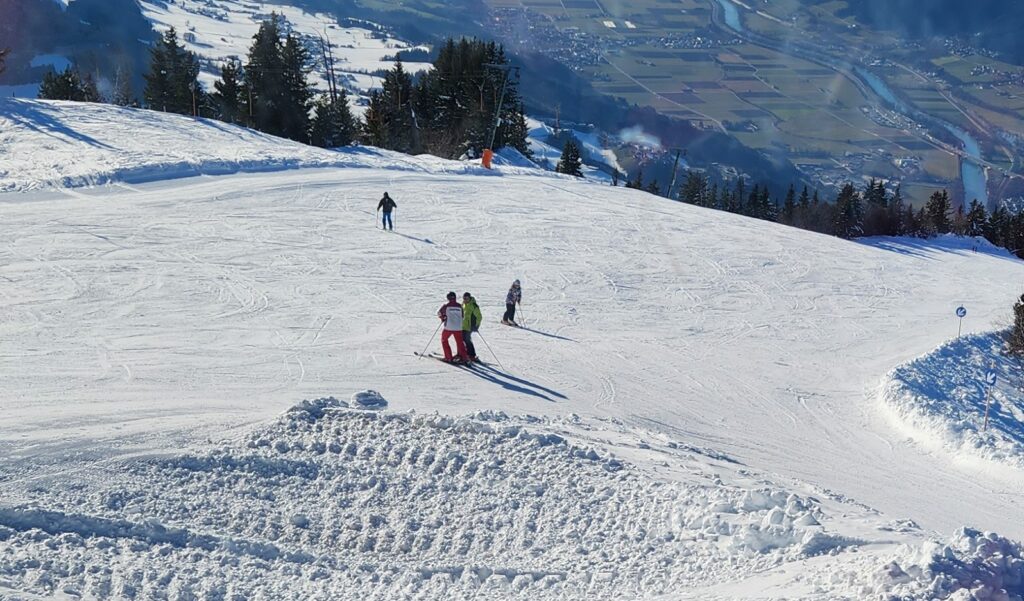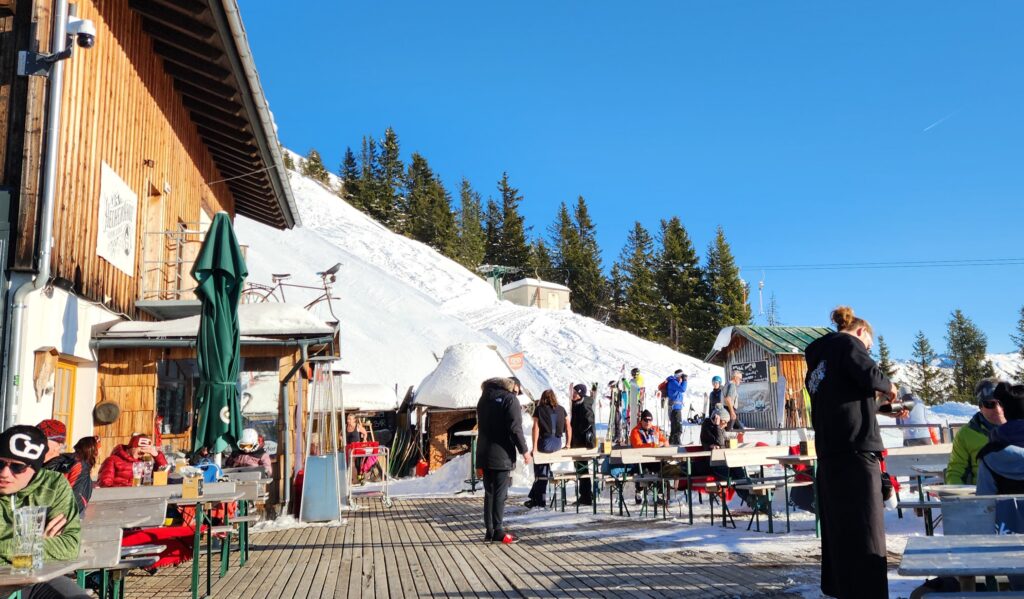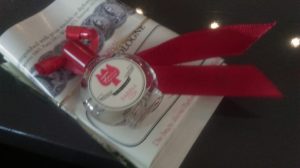If you’re planning to ski in Europe in the 2025 season, my bet is that you’ve already booked and are ready to go. Ski accommodation, lift passes and learn to ski schools book out quickly in the most popular spots. But just in case you haven’t got all of you ski gear yet, here are some recommendations on what you’ll need.
(*This article contains affiliate links, through which, if a purchase is made, the writer may receive a commission)
1. Skis, Boots, and Poles
If you’re a beginner or occasional skier, renting skis, boots, and poles at your resort is often the best option. However, if you’re serious about skiing or prefer having your own equipment, investing in quality gear is worth it.
- Skis: Choose skis suited to your experience level. All-mountain skis are versatile and work well for most European resort conditions.
- Ski Boots: Boots should fit snugly without cutting off circulation. Comfort and proper fit are crucial for performance and enjoyment.
- Poles: Your poles should be the correct length (arms at a 90° angle when holding them upright).
Tip: If renting, book your equipment in advance, especially during peak season, to avoid long waits and ensure availability.

2. Ski Clothing
Layering is the golden rule for ski clothing. The weather can change rapidly in the mountains, so you’ll want to be prepared.
- Base Layer: Moisture-wicking thermal layers (merino wool or synthetic fabrics).
- Mid Layer: A fleece or lightweight insulated jacket for warmth.
- Ski Jacket: Waterproof, windproof, and breathable. Look for jackets with snow skirts and underarm vents.
- Ski Pants: Waterproof and insulated ski pants, with reinforced knees and snow gaiters.
- Ski Socks: Merino wool or synthetic socks designed for skiing to keep your feet warm and dry.
Tip: Avoid cotton—it absorbs moisture and will make you feel cold and damp.
3. Accessories
These smaller items can make a big difference in your comfort and safety.
- Gloves or Mittens: Waterproof and insulated. Mittens are often warmer, but gloves offer better dexterity.
- Neck Warmer or Balaclava: Protects your neck and face from wind and cold.
- Ski Goggles: Essential for visibility in snowy, sunny, or flat-light conditions. Choose goggles with interchangeable lenses if possible.
- Sunglasses: For off-piste lounging or sunny afternoons.
- Helmet: Non-negotiable for safety. Many resorts require helmets for children, and adults should follow suit.
4. Safety and Extras
- Sunscreen and Lip Balm: UV rays are intense in the mountains, even on cloudy days.
- Backpack: A small daypack for water, snacks, and extra layers.
- Avalanche Safety Gear: If you’re skiing off-piste, you’ll need an avalanche transceiver, shovel, and probe. Make sure you know how to use them.
Tip: Always check avalanche warnings and stick to marked trails if you’re not trained in off-piste safety.
5. Après-Ski Wear
European ski resorts are famous for their après-ski culture. Bring comfortable winter boots, cozy sweaters, and casual clothing for evenings spent in mountain lodges or lively ski bars.
- Winter Boots: Warm, waterproof, and with good grip.
- Warm Hat: For off-slope warmth.
- Casual Layers: Comfortable and stylish outfits for après-ski fun.

Final Tips for Skiing in Europe
- Book in Advance: Accommodation, rentals, and ski passes can sell out quickly in peak season.
- Know the Rules: Familiarize yourself with local skiing etiquette and safety guidelines.
- Stay Hydrated: Skiing is physically demanding, and altitude can dehydrate you faster.
But most of all, enjoy your skiing and, of course, your apres-ski!


